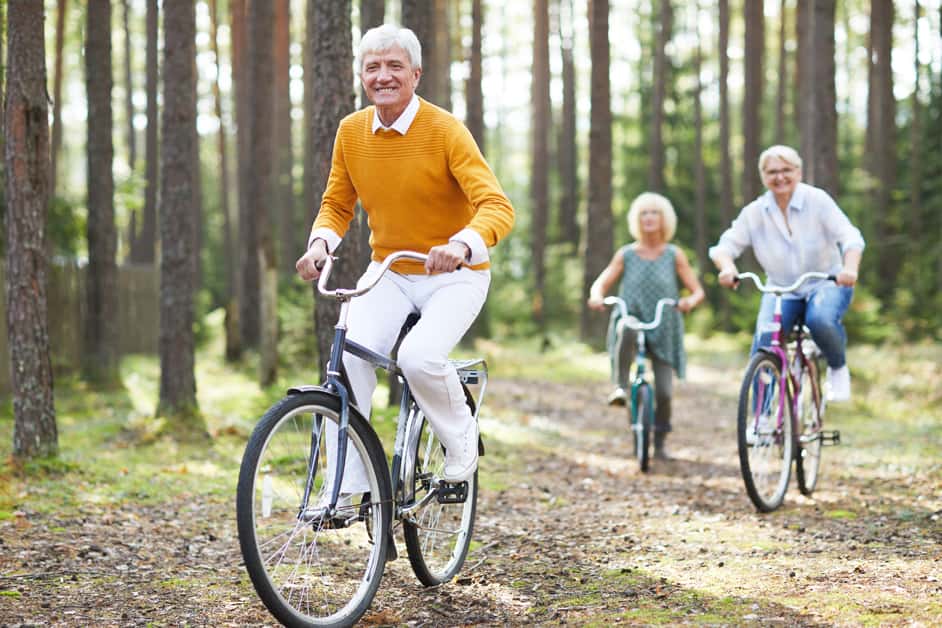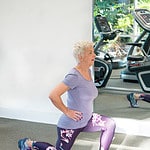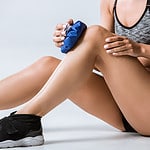Introduction
Knee pain can have many causes. If you suffer from it, your doctor might suggest low-impact activities. These activities can include swimming and biking. They can help the muscles in your knee, reduce inflammation, and increase mobility.
In this article, we’ll look into the best low-impact activities for rehabbing knee pain. We’ll also discuss how they can help:
Overview of knee pain
Knee pain and injuries can have many causes. These include overuse or sudden traumatic injury. Often, these occur in sports or recreational activities. Health issues like arthritis can cause recurring pains, or chronic conditions such as osteoarthritis. Being overweight can also increase the chances of chronic knee pain.
Treatment of knee pain usually starts with physical therapy, lifestyle changes, and medications to reduce swelling and pain. A doctor might recommend surgery for injuries or conditions that don’t respond to other treatments. It is important to speak to a doctor if knee pain lasts longer than two weeks, or gets worse. This prevents further damage.
Benefits of low-impact sports for knee pain rehabilitation
Low-impact sports, such as swimming, biking, and water exercise, can offer many benefits to those with knee pain who stay active. High-impact activities are not recommended for those recovering from knee injuries or surgeries, due to the strain on the joints. Low-impact options can gently strengthen the muscles supporting your knees, and improve range of motion. Therefore, adding walking or low-impact sports to your rehabilitation plan can help manage chronic knee pain, and get in shape after an injury or surgery.
Moreover, low-impact sports have advantages over high-impact activities. For example:
- Swimming is a great way to get cardio without straining the knees, since you’re in deep water.
- Cycling builds muscle strength in both legs, improves balance and coordination. This is important for those recovering from knee injuries.
- Water exercises tone muscles more slowly than land-based workouts, while still providing plenty of workout time. Plus they can be fun!
- Yoga provides gentle exercise to improve posture and core strength. This reduces pressure across the lower body, which is beneficial for injured knees.
Low-impact activities can help those recovering from injuries or surgeries associated with chronic knee pain. They can also rebuild overall fitness levels after surgery, leading to improved physical well being.
Swimming
Swimming is a top-notch, low-impact sport to rehab knee pain. It eases the pain due to its low-impact character. Moreover, it offers a full-body workout without too much stress on any one joint. In addition, swimming boosts your cardio health and boosts stamina while building muscle too.
Let’s further investigate how swimming can help with knee pain rehab:
Overview of swimming
Swimming is a great way to exercise with low impact for people recovering from knee injuries and surgeries. Before engaging in any physical activity related to knee pain, it’s best to consult a medical professional. Swimming strengthens the joint without stressing injured areas. It helps improve flexibility and range of motion by working all muscles in the upper legs, chest, arms, core and back. Furthermore, it’s easier to control body weight in water, so you don’t exert too much force on your knees. Plus, due to water’s natural resistance, you can build strength and minimize joint pain.
To get started swimming, look for a pool with easy access and safety features like stairs or ladders. Warm up first; begin with a light lap swim with long strokes, then gradually increase stamina. Take rests as needed, and pay attention to body cues. Stop if there is any discomfort.
- Low intensity exercises like lateral leg kicks are useful for knee rehabilitation.
- When comfortable, do balance work with easy flutter kicks.
Benefits of swimming for knee pain rehabilitation
Swimming is a great low-impact exercise for those with knee injuries or arthritis. Water’s natural resistance and buoyancy support the body in aerobic activity, reducing stress and inflammation. Exercising in water can also improve range of motion and restore strength.
Swimming can help improve cardiovascular health and burn calories, without putting pressure on injured joints or muscles. Plus, it provides time for mental relaxation, allowing for increased focus on healing your injured knee.
Cycling
Cycling is a top pick for rehabbing knee pain. Strengthening the muscles, ligaments, tendons, and connective tissues around the knee joint? Cycling’s the way to go! Plus, it helps maintain joint mobility and increases range of motion.
Overview of cycling
Cycling is a great sport for those with knee pain. It helps build strength and flexibility in the knee joints. Choose an appropriate bike fit! Make sure the cyclist sits evenly on the saddle, and that clipless pedals are adjusted correctly. Aim to keep the knees above the ankles when pedaling – if not, make adjustments. Replace plastic pedals regularly as they lose grip.
To relieve knee pain, take breaks during rides and alternate with low-impact activities such as swimming or running. Stretch regularly before each ride to keep muscles loose and reduce risk of injury.
Benefits of cycling for knee pain rehabilitation
Cycling is perfect for knee pain relief and rehab. It’s low-impact and allows riders to set their own goals. Individuals recovering from injury or surgery can build strength and endurance without aggravating their knee pain.
The benefits of cycling can be realized quickly. Plus, riders often describe it as therapeutic. Physios may recommend cycling over high-impact activities, as it’s much gentler on the knees.
For those with knee pain, it’s possible to regulate pedaling resistance and speed on stationary bikes or ellipticals. This is particularly useful for those just returning from injury or surgery. Pedaling at a comfortable rate can help regain strength, while also easing symptoms such as tendonitis or soreness from running or sports.
Incorporating cycling into rehab is an ideal way to help patients maintain mobility. It can reduce swelling, improve muscle flexibility and increase joint movement until full recovery is achieved.
Yoga
Yoga is a low-impact exercise. It offers a range of poses and techniques. These can be beneficial for people with knee pain or recovering from a knee injury. Yoga is known for its stress-relieving and calming effects. But it can also build strength and stretch the muscles around the knee. This increases range-of-motion. With regular practice, it can help to reduce knee pain and the risk of future injury.
Overview of yoga
Yoga is a popular, low-impact form of exercise. Many people find relief from chronic pain and stress through yoga. It’s also used to help with knee arthritis and other joint pain, aches and stiffness.
Adapted yoga with postural corrections is the best kind for knee rehabilitation. Each pose should be done slowly, allowing your body time to adjust and relax. Balance should be maintained throughout each flow.
A successful rehab program includes
- proper nutrition
- mobility exercises
- corrective exercises
- flexibility training
which helps improve muscle performance and reduce injury.
Mindful breathing during practice engages both the physical body and the mental state. This can help improve mobility and increase overall well-being. It can also help cope with personal challenges while strengthening the body.
Benefits of yoga for knee pain rehabilitation
Yoga is a great low-impact sport with many benefits. It rehabs knee pain and improves joint health and strength. Stretching and resistance training increase flexibility and balance. It eases aches, pains, and stiffness in the lower body. It strengthens the knees and improves range of motion. Plus, yoga reduces stress, improves posture and breathing, strengthens core abdominal muscles, and creates body awareness. All of these are important for rehabbing knee pain.
Yoga poses for knee pain should focus on strengthening thighs, gluts, hip flexors, and hamstrings. Poses like Chair Pose, Warrior I, Tree Pose, and Downward Dog are very beneficial. They help strengthen leg muscles and improve alignment, reducing strain on the knee joints. Leg Lifts can also help stretch hip flexors, reducing tension around the knees. If you have special needs, consult a yoga therapist. They can provide modifications or tailor a program for you.
Tai Chi
Tai Chi is a great, low-impact option for those with knee pain. It’s a gentle martial art that uses slow-paced movements to make your lower body stronger and more flexible. Plus, it can help keep you balanced and aid your posture. Not to mention it could improve your mental health too!
Let’s look at how Tai Chi can help with knee pain recovery:
Overview of Tai Chi
Tai Chi is an ancient Chinese martial art. It is often called “meditation in motion” due to its graceful movements. The purpose of this art is to harmonize the mind and body, and also balance Yin and Yang forces.
Tai Chi’s slow movements can help improve knee pain. It builds muscle tone in this area and increases flexibility. Moreover, it strengthens the surrounding muscles for better knee stability. As such, it is a perfect low-impact exercise for injury or surgery rehab.
In addition to its physical advantages, Tai Chi’s mental focus helps athletes with knee injuries or chronic pain conditions. It calms muscles around the affected joints, and it enhances concentration and coordination.
Tai Chi classes usually involve:
- Stretches
- Postures
- Stances
- Choreographed steps
It is easy to adjust the intensity based on one’s needs or ability. Thus, it is a great choice for those who want to be fitter while managing or preventing knee issues.
Benefits of Tai Chi for knee pain rehabilitation
Tai Chi is a safe, low-impact exercise for those with knee pain. It involves a sequence of slow elliptical motions, postures and breathing. This helps rebalance the body and keeps joints flexible. Tai Chi strengthens the muscles around the knee joint, increases range of motion, enhances stability and coordination, reduces inflammation, relieves pain and improves mobility.
Performing Tai Chi has many benefits for those with knee pain. Slow movement helps relax, increase circulation and reduce spasms in muscles and tendons. This can limit joint mobility. Tai Chi also prevents further stress on ligaments which lack strength or flexibility. This can cause strain on the joint during daily activities or sports.
Practicing with an experienced instructor can form an enjoyable movement therapy session. This can reduce current discomfort and guard against future risks associated with knee pain if done consistently.
Conclusion
To sum up, what exercise is best for knee pain rehab depends on the individual. Swimming, cycling, yoga and Pilates are common options for people with knee pain. They provide flexibility, strength and mobility without straining the joint. Flexibility and range of motion are key for knee injury recovery, as they boost blood flow and reduce pain.
Before starting a rehab program, it’s important to consult a doctor or physical therapist. This ensures you take preventative measures while aiding healing. With the right blend of low-impact activity and professional guidance, you can have peace of mind that you’ll be back to sport soon.
Frequently Asked Questions
Q: What are the best low-impact sports for knee pain rehabilitation?
A: The best low-impact sports for knee pain rehabilitation include swimming, cycling, yoga, and tai chi. These activities put less stress on the knee joint and can help strengthen the muscles and ligaments around the knee.
Q: How often should I do low-impact sports to help with knee pain?
A: It is recommended that you do low-impact sports at least three times a week for 30 minutes to help with knee pain. You should consult with your doctor before beginning any exercise program.
Q: Are there any other activities that can help with knee pain?
A: Yes, there are other activities that can help with knee pain. Low-impact exercises such as stretching, Pilates, and water aerobics can help strengthen the muscles around the joint and reduce pain. You should consult with your doctor before beginning any exercise program.





